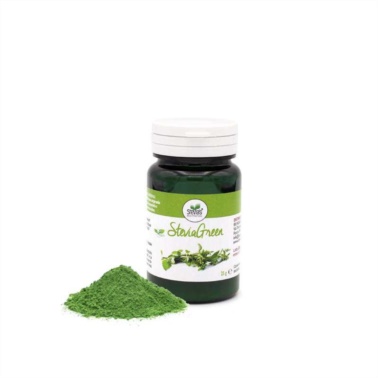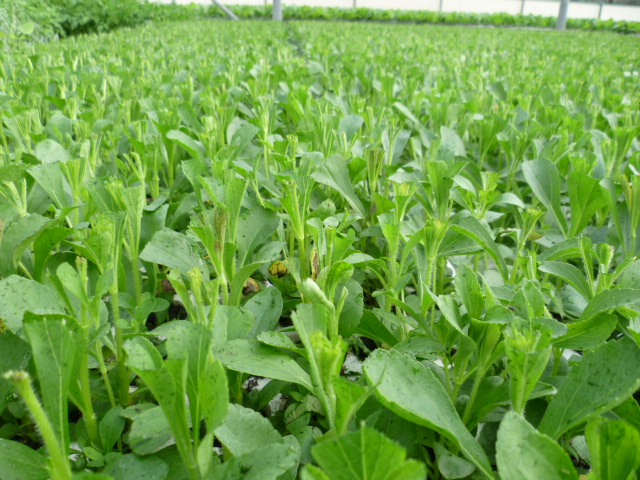STEVIA
Stevia‘s is the first brand in Italy specialized in the distribution of sweeteners with pure Stevia and production of natural products sweetened
with Stevia from organic cultivation.
All our products are studied and developed with particular care for health and quality of the raw materials used.
Stevia Rebaudiana Bertoni is a spontaneous herbaceous-arbustive medicinal plant of the Asteraceae family, native from the mountains between Paraguay and Brazil, it has many peculiarities even if it is mainly known and used for its sweetening power.
On this page we are going to get to know Stevia in greater depth, starting with a little of its history
► In pre-Columbian times, the Stevia was known by the Guarani natives as “Ka’a he’ê” (sweet herb) and used to sweeten the bitter taste of the Mate and as a healing plant.
► Centuries later, in 1797, the botanist Antonio José Cavanilles created the genus Stevia on the basis of four Mexican species, which arrived at the Botanical Garden of Madrid thanks to the Real Expediciòn Botànica in Nueva España, dedicating it to the botanist Pedro Jaime Esteve.
► In 1899 the botanist Moses Giacomo Bertoni catalogued the plant for the first time, initially giving it the name of Eupatorium rebaudianum, in honor of the Paraguayan chemist Ovid Rebaudi, who was the first to chemically analyze the plant. Bertoni classified as many as 250 variants of the plant.
► In 1931 the French chemists M. Bridel and R. Lavielle were the first to isolate the molecules that make Stevia sweet, now known as Steviol glycosides.
► Around 1940, the use of leaves in the South American food industry began.
► Since 1970, the Japanese have conducted extensive analysis and research on Stevia, finding that its use was completely safe.
► In 1971 the first commercial uses of Stevia took place in Japan.
► In 2008, the American Food and Drug Administration (FDA) awarded the extract of Stevia high purity the status of GRAS (Generally Recognized As Safe), allowing it to be used in food and beverages.
► In 2011, the European Food Safety Authority (EFSA) approved the use of Steviol glycosides in food and beverages.

European law
Not all Steviol glycosides are allowed as sweeteners in food, with the Regulation (EU) n.231/2012 Europe has defined the specifications, classifying them as E960.
These are the main features of the E960:
► It must contain a minimum of 95% of permitted Steviol glycosides, in any combination and relationship.
The Commission Regulation (EC) No 1133/2008 and subsequent amendments and additions, allows the use of the E960 in the food industry; in the document it can be seen that the permitted quantities are very low: 4mg per kg body, however sufficient for the purpose.
How to use Stevia extract
Dosing the extract of Stevia can seem very complicated, given its high sweetening power, so if you follow our advice you will have no hassle in preparing excellent sweets without sugar!
Our advice is the same as that given for salt: we always have time to add it rather than remove it.
It is advisable to calculate from the beginning the exact amount of Stevia extract that the recipe requires.
e.g.: In a classic cake, with an equivalent sugar content of 175 g, a quantity of 0.5 g of Stevia extract should be used.
The ratio to be used for equivalence is 35 g of sugar = 0.1 g of Stevia extract. Remember that you can add some wheat starch or hazelnut grain to replace the
volume of sugar that is missing.
For ease of use, Stevia’s powdered pure extract packs offer practical solutions for precise dosing. All our products can be found in the Sweeteners section.
Stevia enhance food and does not cover its taste: so you will first feel the true flavour of the food in which you put it, then the sweet and delicate flavour of Stevia will take over. You will learn to appreciate again the real taste of food, you will refine your palate and you will get used to a new taste of sweet
that will make you pass the craving for sugar.
We suggest you try it with: Acid foods, Spices (cinnamon, cardamom, ginger, star anise, cloves), fresh fruit, whole wheat flour, buckwheat flour, butter, lemon, orange and cocoa. Our favourite recipes can be found in our cookbook, sent free of charge with each purchase.
If you have any questions or information do not exist to contact us, we will be happy to answer any questions or requests, even with the support of a nutritionist.
You find all our products in our shop.
MORE DETAILS:
Le proprietà antiossidanti della Stevia
La Stevia contro il Diabete di tipo 2
Studio Diabete: interazione della Stevia con proteine della Soia

Its features
Stevia is edible and suitable for human consumption and is mainly used for its active ingredients (Steviol glycosides) from the power up to 350 times sweeter than common sugar, the leaves also have different medicinal properties and if taken every day in the form of herbal tea,
have these characteristics:
►Ideal for those suffering from diabetes because it regulates glycemic values through the Pancreas, which stimulates the creation of Insulin.
►Anti-inflammatory
►Hypotensive – Acts by regulating blood pressure
► Prevents enteric forms and facilitates gastrointestinal functions
► Antibacterial
► Diet – Chewing a leaf before lunch or dinner decreases the sense of hunger
► The sweetener has no calories or glycemic index
► Acariogenic – Prevents gum disease and dental caries
► Helps reduce menopausal flushes and pre-menstrual pain
► To quit smoking just chew a leaf every time there is a desire for a cigarette
SOURCE : eustas.org
From chemical analysis comes out that its leaves also contain: Iron, Phosphorus, Calcium, Sodium, Potassium, Magnesium, Zinc, Rutin (a flavonoid),
Vitamin A, Vitamin C and an oil that in turn contains 53 different elements.
Steviol glycosides
As mentioned before, Steviol glycosides is the generic name of the sweetening substances extracted from the Stevia plant. With their high sweetening power,
which varies according to the type of substance, Steviosides and Rebaudiosides are able to sweeten 40 to 350 times more than sucrose.
These substances make up about 10% by weight of the dry leaves and in turn, the most common and used in food, Stevioside and Rebaudioside A are about 70% of the total. The Steviol glycoside with the best sweetening power currently available is Rebaudioside A with a purity of up to 98%.
Over the years, Stevia has been the subject of numerous studies and analyses, and the consumption of Steviol glycosides has been approved and regulated
by the FDA and EFSA. At the same time, the FAO (Food and Agriculture Organization) and the WHO (World Health Organization) define the ADI (Acceptable Daily Intake) in 4mg/kg body weight per day.
For our products, we have chosen to use Stevioside and Rebaudioside A of first choice: they are extracted by a completely natural process, excluding synthetic refining or bleaching as is the case in the production of many sweeteners.
The process in fact involves the extraction in water and Bio ethanol with subsequent evaporation of alcohol. We then move on to a series of filters with vegetable carbons that allow our product to present itself in the form of a light creamy white powder, which retains all its properties, its benefits and its aroma, of course.
Stevioside and Rebaudioside A are both free of calories and sugars, in fact they do not modify the glycemic balance (glycemic index: zero). These components also have excellent resistance to high temperatures and therefore to fermentation phenomena.
This ensures that they can be stored for a long period of time and can therefore be used in a wide variety of food preparations.